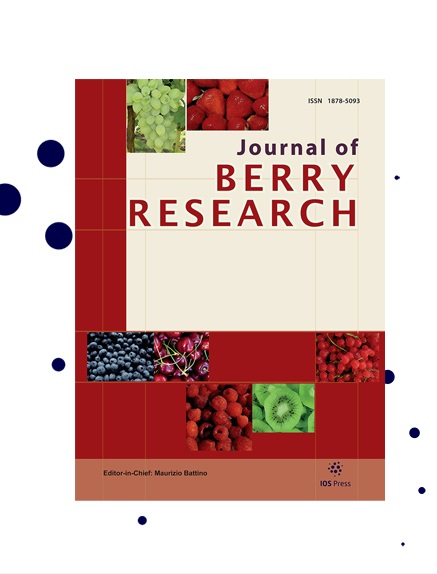Hybrid RSM-GA approach to optimize extraction conditions for blueberry anthocyanins with high antioxidant activity
IF 1.4
4区 农林科学
Q3 PLANT SCIENCES
引用次数: 0
Abstract
BACKGROUND: Blueberry contains an abundance of anthocyanins, which are a bioactive component of this fruit. Anthocyanins can be extracted via various methods, and each has pros and cons. OBJECTIVE: This current study reported the optimal conditions for the ultrasonic-assisted enzymatic extraction of blueberry anthocyanins simulated using response surface methodology (RSM) coupled with a genetic algorithm (GA). METHODS: The Box–Behnken design (BBD) was used for the RSM, and the extraction conditions were as follows: temperature, 42°C; ultrasonic power, 310 W; enzyme volume, 0.25% ; and extraction time, 42 min. RESULTS: The maximum predicted extraction yield was 6.67 mg/g. The antioxidant activity of anthocyanins extracted via RSM and GA was based on the hydroxyl free radical activity and supersonic anion free radical activity of 230.50±12.76μg/ml and 4.41±0.36μg/ml, respectively. Anthocyanins exracted by the proposed method has stronger free radical removal capacity than that of Vc. CONCLUSIONS: This study shows that the combination of RSM with GA represents an optimized method for extracting blueberry anthocyanins for use in the food industry. This method can maintain high antioxidant potential and can be used as an alternative strategy for high-value products.杂交RSM-GA法优化高抗氧化活性蓝莓花青素提取工艺
背景:蓝莓含有丰富的花青素,这是这种水果的生物活性成分。花青素的提取方法多种多样,各有优缺点。目的:采用响应面法(RSM)结合遗传算法(GA)模拟超声辅助酶法提取蓝莓花青素的最佳工艺条件。方法:采用Box-Behnken设计(BBD),提取条件为:温度42℃;超声波功率310 W;酶体积,0.25%;提取时间为42 min。结果:预测最大提取量为6.67 mg/g。RSM法和GA法提取的花青素抗氧化活性分别为:羟基自由基活性为230.50±12.76μg/ml,超音速阴离子自由基活性为4.41±0.36μg/ml。该方法提取的花青素具有比Vc更强的自由基清除能力。结论:本研究表明,RSM - GA联合提取蓝莓花青素是一种可用于食品工业的优化方法。该方法可保持较高的抗氧化潜力,可作为高价值产品的替代策略。
本文章由计算机程序翻译,如有差异,请以英文原文为准。
求助全文
约1分钟内获得全文
求助全文
来源期刊

Journal of Berry Research
Biochemistry, Genetics and Molecular Biology-Biochemistry
CiteScore
3.50
自引率
11.80%
发文量
21
期刊介绍:
The main objective of the Journal of Berry Research is to improve the knowledge about quality and production of berries to benefit health of the consumers and maintain profitable production using sustainable systems. The objective will be achieved by focusing on four main areas of research and development:
From genetics to variety evaluation
Nursery production systems and plant quality control
Plant physiology, biochemistry and molecular biology, as well as cultural management
Health for the consumer: components and factors affecting berries'' nutritional value
Specifically, the journal will cover berries (strawberry, raspberry, blackberry, blueberry, cranberry currants, etc.), as well as grapes and small soft fruit in general (e.g., kiwi fruit). It will publish research results covering all areas of plant breeding, including plant genetics, genomics, functional genomics, proteomics and metabolomics, plant physiology, plant pathology and plant development, as well as results dealing with the chemistry and biochemistry of bioactive compounds contained in such fruits and their possible role in human health. Contributions detailing possible pharmacological, medical or therapeutic use or dietary significance will be welcomed in addition to studies regarding biosafety issues of genetically modified plants.
 求助内容:
求助内容: 应助结果提醒方式:
应助结果提醒方式:


